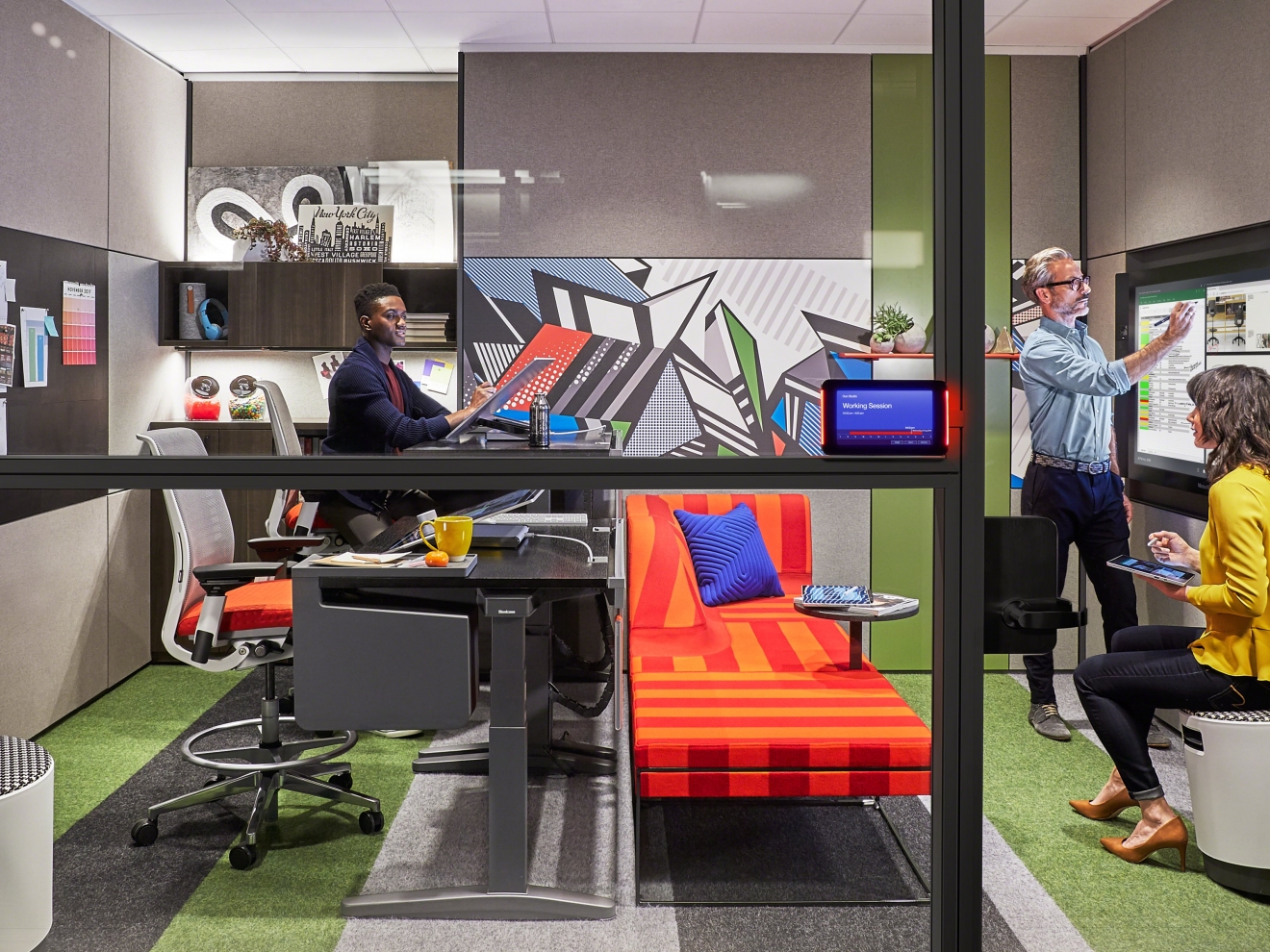 We are working hard, but not smart. Research released by the TUC in April shows that UK workers are putting in the longest hours in the EU, but this isn’t translating into improved productivity. In fact, the research shows employees in Denmark put in over four hours less than UK workers – whilst productivity in Denmark is 23.5 percent higher than the UK.
We are working hard, but not smart. Research released by the TUC in April shows that UK workers are putting in the longest hours in the EU, but this isn’t translating into improved productivity. In fact, the research shows employees in Denmark put in over four hours less than UK workers – whilst productivity in Denmark is 23.5 percent higher than the UK.
For some time now, UK businesses have been trying to find ways to tackle this productivity gap, implementing initiatives that make employees more productive, efficient, as well as more engaged. Remote and mobile working has been one of these initiatives, that has given people control over their time, helping them choose how, where and when they want to work. It’s becoming a core part of how we work at Microsoft, as well as for the customers we work with. Indeed, research shows that by 2022 mobile workers will account for almost half of the total workforce.
The office is still central to the workplace, but it’s not designed to support the flow of new ways of working and collaboration. In reality, many offices fail to truly embrace remote workers and by doing so don’t make the most of their workforce.
Bridging the gap between physical and virtual
In today’s workplace, we spend most of our days working collaboratively – our research has shown that we are on twice as many teams as we were five years ago. What’s more, 80 percent of people consider collaboration essential for their work. Despite the importance of us working together, we’re experiencing hefty challenges in collaborating with our remote workers successfully – we’ve all been there when joining meetings remotely and the connection gets cut, or people even forget you’re online.
The problem runs deep, as research points to feelings of loneliness and disconnection experienced by remote workers.
So, what can businesses do to make sure that their workplace isn’t siloed and they’re not creating a barrier between employees who choose to work in different ways?
Bringing people together
Technology is the driver behind remote and mobile working, turning what was once a ‘benefit’ that progressive businesses were offering into a natural way of working. This means most employees have mobile, lightweight devices that they can easily take with them from meeting to meeting, or that enable them to work on the go from various locations. Coupled with collaboration software, this has enabled employees to work together in real time regardless of where they are physically – on the commuting train, or even on the other side of the world.

One change businesses can implement to ensure remote workers are engaged is to set up the tech in their office so that virtual experiences feel less remote. Large scale collaboration devices, for example, can become a hub for teamwork, enabling teams to truly work together. Integrating this with collaboration software can turn this type of device into a place where team members can gather, regardless of their physical location. They can sketch designs together, bounce ideas off each other and get the most of each other’s skills and ideas.
Video conferencing can also help teams get some much-needed face to face interaction, helping forge the bonds needed for successful collaboration to take place. For remote workers, the value of this is huge as it offers them the opportunity to join in, be part of the team, be seen and heard. It’s a way for the office to come alive for them, and for the team dynamic to be tangible and something they can influence and help shape.
Rethinking the office space
In this workplace evolution, we tend to forget about the office. Research from our partner Steelcase has uncovered that most offices are still designed for linear work and don’t promote the type of activities and workflow required for remote collaboration to take place. What this means in practice is that often when large scale collaboration tools are introduced, the design of the space becomes a barrier between the people and the device. Take a traditional office space as an example – if you have a mobile collaboration screen, more often than not it’ll end up on a meeting room wall. Even if you can move it whenever you like, there’s little room in hotdesking or collaboration areas to put a large device.
Before embarking on digital transformations, it’s important to take a look at the office layout and ensure that technology doesn’t end up falling short.
Business leaders need to make this a priority in order to make successful collaboration between remote teams a reality. In the not so distant workplace of 2022, business success could hinge on whether we’ll be able to involve a growing virtual workforce and build relationships that cross physical borders.
Howard Lewis is Surface Business Group Lead at Microsoft














October 2, 2019
Breaking free of the linearity of modern work
by Howard Lewis • Comment, Technology, Workplace design
For some time now, UK businesses have been trying to find ways to tackle this productivity gap, implementing initiatives that make employees more productive, efficient, as well as more engaged. Remote and mobile working has been one of these initiatives, that has given people control over their time, helping them choose how, where and when they want to work. It’s becoming a core part of how we work at Microsoft, as well as for the customers we work with. Indeed, research shows that by 2022 mobile workers will account for almost half of the total workforce.
The office is still central to the workplace, but it’s not designed to support the flow of new ways of working and collaboration. In reality, many offices fail to truly embrace remote workers and by doing so don’t make the most of their workforce.
Bridging the gap between physical and virtual
In today’s workplace, we spend most of our days working collaboratively – our research has shown that we are on twice as many teams as we were five years ago. What’s more, 80 percent of people consider collaboration essential for their work. Despite the importance of us working together, we’re experiencing hefty challenges in collaborating with our remote workers successfully – we’ve all been there when joining meetings remotely and the connection gets cut, or people even forget you’re online.
The problem runs deep, as research points to feelings of loneliness and disconnection experienced by remote workers.
So, what can businesses do to make sure that their workplace isn’t siloed and they’re not creating a barrier between employees who choose to work in different ways?
Bringing people together
Technology is the driver behind remote and mobile working, turning what was once a ‘benefit’ that progressive businesses were offering into a natural way of working. This means most employees have mobile, lightweight devices that they can easily take with them from meeting to meeting, or that enable them to work on the go from various locations. Coupled with collaboration software, this has enabled employees to work together in real time regardless of where they are physically – on the commuting train, or even on the other side of the world.
One change businesses can implement to ensure remote workers are engaged is to set up the tech in their office so that virtual experiences feel less remote. Large scale collaboration devices, for example, can become a hub for teamwork, enabling teams to truly work together. Integrating this with collaboration software can turn this type of device into a place where team members can gather, regardless of their physical location. They can sketch designs together, bounce ideas off each other and get the most of each other’s skills and ideas.
Video conferencing can also help teams get some much-needed face to face interaction, helping forge the bonds needed for successful collaboration to take place. For remote workers, the value of this is huge as it offers them the opportunity to join in, be part of the team, be seen and heard. It’s a way for the office to come alive for them, and for the team dynamic to be tangible and something they can influence and help shape.
Rethinking the office space
In this workplace evolution, we tend to forget about the office. Research from our partner Steelcase has uncovered that most offices are still designed for linear work and don’t promote the type of activities and workflow required for remote collaboration to take place. What this means in practice is that often when large scale collaboration tools are introduced, the design of the space becomes a barrier between the people and the device. Take a traditional office space as an example – if you have a mobile collaboration screen, more often than not it’ll end up on a meeting room wall. Even if you can move it whenever you like, there’s little room in hotdesking or collaboration areas to put a large device.
Before embarking on digital transformations, it’s important to take a look at the office layout and ensure that technology doesn’t end up falling short.
Business leaders need to make this a priority in order to make successful collaboration between remote teams a reality. In the not so distant workplace of 2022, business success could hinge on whether we’ll be able to involve a growing virtual workforce and build relationships that cross physical borders.
Howard Lewis is Surface Business Group Lead at Microsoft